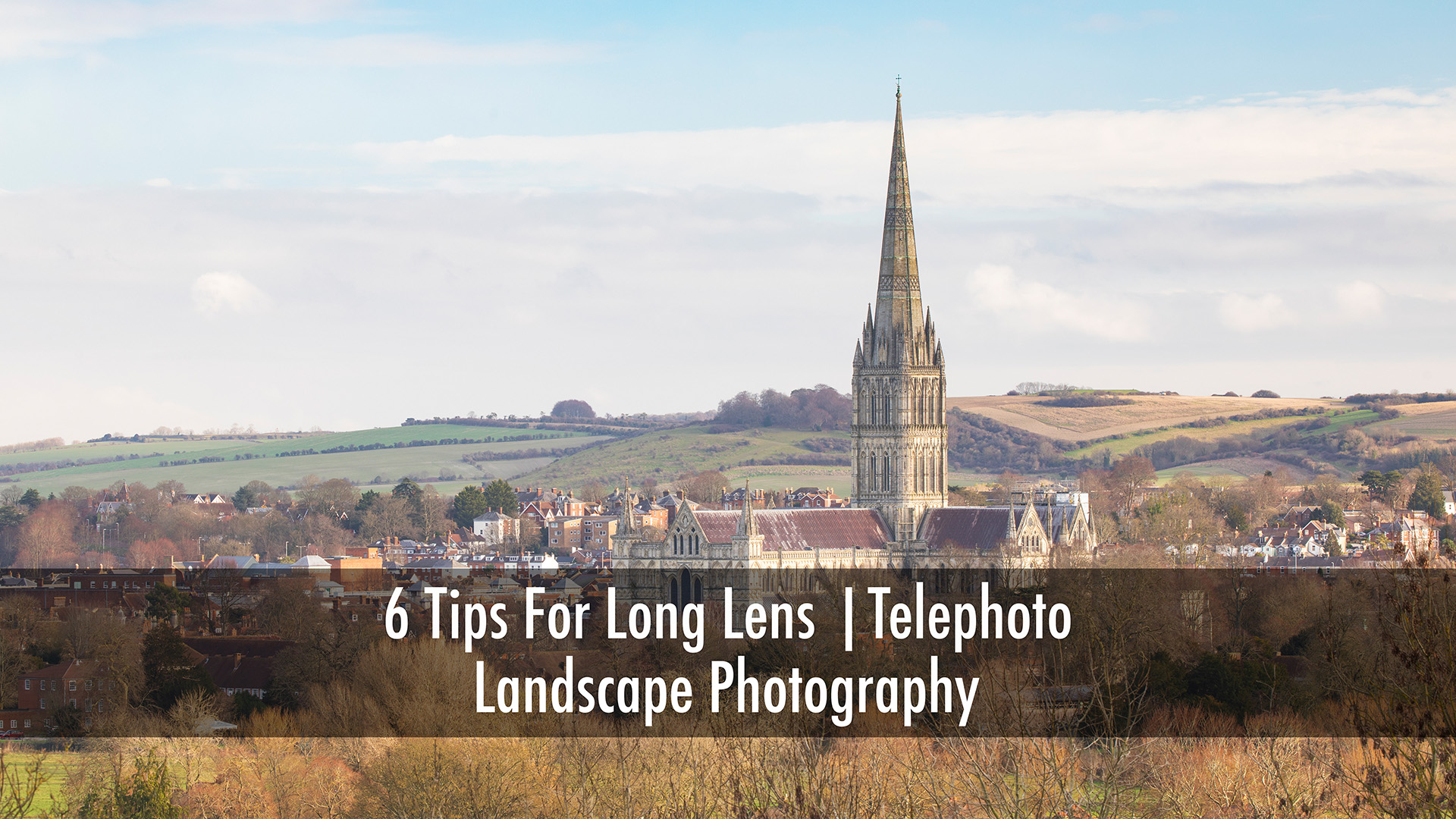
When it comes to landscape photography most people will head for the wide-angle lenses in their bag. But a long/ telephoto lens can add an edge to your landscape photography.
The telephoto lens allows you to crop tight into your subject. To really draw the eye into the image. You can, of course, pick out details but whatever you decide as a landscape photographer you should absolutely have either a 70-200mm or a 100-400mm lens in your bag.
During a recent trip to the UK, I decided to talk you through how I approach long-lens telephoto landscape photography. The subject is Salisbury cathedral. It took approximately 2.5 hours for the light to be in the right place.
Please note: This video was filmed before the UK Government lockdown had commenced.
Before heading out, gather inspiration for your telephoto landscape photography shots. Many photographers gravitate toward wide-angle lenses for expansive views. However, long lenses can provide a fresh take by allowing you to focus on specific details in the landscape.
Ask yourself: What catches your eye? Reflect on your previous experiences. For instance, a cropped image of the beach at Durdle Door in Dorset once turned out to be a surprising success. Narrowing your focus can reveal unexpected beauty, so take time to visualize what you aim to capture.
Planning is essential for long-lens telephoto landscape photography. Know your subject well and consider factors like location and accessibility. For example, if you’re photographing Salisbury Cathedral, check sunrise times and the sun’s angle. Make sure you allow extra time to reach your spot, especially if parking is limited.
Think about potential barriers—gates or fences that might block your path. Local knowledge can greatly aid your planning. If you’re familiar with the area, you can navigate more easily to your chosen spot.
Light can make or break telephoto landscape photography. As you plan, pay close attention to the direction of the light. For your long-lens landscape shots, side light can add depth and dimension.
In the morning, the sun may rise behind clouds, casting your subject in shade. However, don’t let clouds deter you. Dramatic skies can enhance your images as long as the light catches your subject at the right moment.
Weather significantly impacts your photography. Before you head out, check the forecast conditions for your shooting location. Is it clear? Overcast? Windy? Each element plays a crucial role.
Wind, for example, can affect your camera stability, leading to unwanted blur. Ensure you have a steady tripod, and be prepared to adjust your exposure settings if necessary.
When using a telephoto lens, exposure times need special attention. A common rule suggests shooting at a speed that matches your focal length. So, at 200mm, aim for at least 1/200th of a second or faster to ensure sharpness.
However, this can vary depending on conditions. If it’s windy, consider using a faster shutter speed to avoid camera shake. If you have access to long-lens supports, they can help you stabilize your shots and reduce camera shake.
Focusing accurately is vital for long-lens telephoto landscape photography. Use live view to frame your subject and tap to focus. Be meticulous with your shots since there’s less room for error with telephoto lenses compared to wide angles. Always review your images to confirm focus and adjust as needed.
Long-lens telephoto landscape photography presents unique challenges and rewards. With careful planning and attention to detail, you can achieve stunning images that capture the essence of your surroundings. By understanding your subject, the light, and weather conditions, you’ll be better prepared to take your telephoto shots to the next level.
So, grab your gear, head outside, and start exploring the beauty that lies in the details.